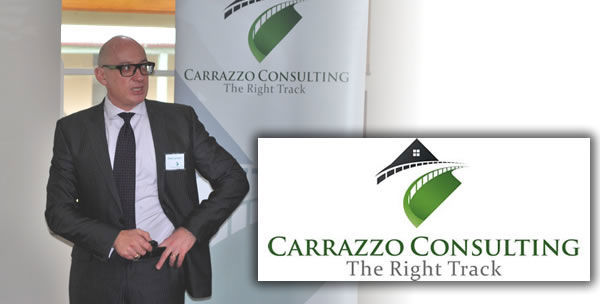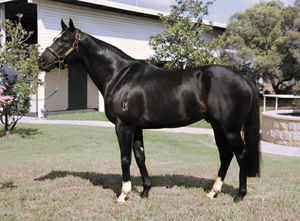Fringe Benefits Tax (FBT) is a confusing concept for many of my racing industry clients (and many Accountants too!).
Not only do clients consider it an unfair and “silent” tax, but the frustration mainly revolves around as to when it applies.

This article is going to explore the most common of all FBT liabilities – the providing of cars to employees.
It will surprise few that car benefits are a major factor in the racing and breeding industry, given that valued senior employees (e.g., farm managers) are often incentivised to join a rural based employer through the provision of an appropriate work vehicle.
Based on my experience with business clients and the ATO, below I will discuss the key issues surrounding the providing of car fringe benefits.
Where an employer, associate of an employer (e.g., partner or child) or third party under an arrangement with the employer provides a motor vehicle to an employee, a car benefit may arise.
Where a car benefit does arise, the employer will be liable to fringe benefits tax on the taxable value of that benefit unless an exemption applies.
A car benefit arises where the following requirements are satisfied:
(1) the motor vehicle is a “car” (refer below)
(2) the car is provided to the employee or an associate of an employee
(3) the car must be “held” by the provider
(4) the car must be either:
(a) applied to a private use, or
(b) made available for private use.
Refer below for my commentary on these above requirements.
- WHAT IS A “CAR” FOR FBT PURPOSES?
Not all of your business vehicles are subject to FBT, especially common farm vehicles.
For FBT to apply, the employee or an associate of an employee must be provided with an eligible “car”.
A “car” is defined the Tax Act. That is, any motor-powered road vehicle (including a four-wheel drive but excluding a motor cycle or similar vehicle) being:
• a station wagon, panel van, utility truck or similar vehicle designed to carry a load of less than one tonne, or
• any other road vehicle designed to carry a load of less than one tonne and fewer than nine passengers.
Where a motor vehicle is not a car, then the provision of the motor vehicle will not be a car fringe benefit.
Panel vans
The inclusion in the definition of “cars” of panel vans refers to passenger car derivatives which have the same body configuration as a car forward of the windscreen. Delivery vans are not considered to be panel vans but may qualify as a car provided, they are designed to carry loads of less than one tonne or fewer than nine passengers.
Utility trucks
The meaning of “utility truck” in the Tax Act was considered in a Tax case.
The court held that a utility truck is a vehicle which is a derivative of a car and does not include vehicles which are made along the same lines as a truck, i.e., which incorporate a chassis to which a variety of goods-carrying sections can be fitted.
Other road vehicles
A motor vehicle of any kind will be a car if it is designed to carry a load of less than one tonne and fewer than nine passengers. The method of calculating the designed load carrying capacity of a vehicle was considered in a Tax case. In that case, the board held that the question of what load a vehicle is designed to carry is to be determined in the light of the Australian design rules.
Thus, in the case before the Board, a Volkswagen delivery van model No 214 which had a maximum loaded vehicle weight of 2,300 kg and an unladen weight of 1,195 kg was held to have a design load of 1,105 kg and would therefore not be a car.
- WHEN DOES AN EMPLOYER “HOLD” A CAR?
The car must be “held” by the employer, or by an associate of the employer, or by the third party with whom the employer or associate arranges for the car to be provided, a car is “held” by a person if it is:
• owned by the person
• leased by the person, or
• otherwise made available to the person by another person.
An example of where a car would be otherwise made available is where a car owned by one member of a group of companies is lent to another member and is applied to or available for the private use of an employee of the second company.
Long-term leases
A car which is leased by the provider will be held by the provider. The term “lease” means “let on hire (including a letting on hire that is described in the relevant agreement as a lease) under an agreement other than a hire-purchase agreement”. A “lease” also includes a sub-lease.
Short-term hire
The hire of a taxi does not amount to the provision of a car benefit since the taxi is not “held” by the provider.
Car under hire purchase
A car held by a person under a hire-purchase agreement is deemed to have been purchased at the time it was first taken under the agreement and to have been owned by that person at all material times. This means that a car provided by an employer for the private use of an employee will give rise to a car benefit where the employer has hired the car under a hire purchase agreement.
- CAR APPLIED TO A PRIVATE USE
For a benefit to apply, the car must be applied by the employee for private use.
A car is applied to a private use if it is used in accordance with the employee’s directions, instructions or wishes.
Meaning of “private use”
A “private use” is any use of the car by the employee that is not exclusively in the course of producing assessable income of the employee. “Producing assessable income” includes gaining assessable income or carrying on a business for the purpose of gaining or producing assessable income. Therefore, any employment-related use of the car by the employee would not be private use. Further, any use giving rise to other assessable income of the employee not related to employment would also not be private use.
Example
A company allows an employee to use a company car on weekends. The employee runs a private income-producing business during his spare time.
If the employee’s only use of the car over the weekend is in relation to the conduct of the business, then there will not have been any private use of the car.
Travel between places of employment/business
Travel between two places of employment, two places of business, or a place of employment and a place of business will generally be accepted as business travel where the person does not live at either of the places and the travel has been undertaken for income-producing purposes.
Where the person lives at one of the places said to be a place of employment or business, the nature of the travel will depend on the nature of the income-producing activity carried on at the person’s home. Where a person carries on part-time income-producing activities at home and is employed full-time elsewhere, travel between home and work will not be a business trip unless some aspect of the travel is directly related to the part-time activity (e.g., a part-time orchardist delivering fruit). Similarly, travel to unrelated part-time employment by a person with a full-time business at home will not be a business trip.
Where a self-employed person uses his or her home, or part of it, as a base of business operations (e.g., painters, plumbers, electricians), travel between home and another place of employment or business will be accepted as business travel where it is part and parcel of the income-producing activities.
Business trips on way to or from work
Where an employee makes a business call on the way to or from work, the whole home/work trip may in some cases be accepted as a business trip. This is where the employee has a regular place of employment, the travel concerned is to an alternative destination that is not a regular place of employment, and the employee performs substantial employment duties at the destination.
Transport of equipment
In limited cases, where an employee needs a car to carry bulky equipment around, and there are sound reasons for keeping the equipment at home, the use of the car may be attributable to the carrying of the equipment rather than home/work travel, and therefore be accepted as a business trip.
- FBT PAYABLE— CAR FRINGE BENEFITS
Employers have a choice of using either the statutory formula method or the cost basis method for calculating the taxable value of a car fringe benefit.
If the employer wishes to use the cost basis method for a particular car, an election must be made otherwise the statutory formula method will apply.
Given that a log book must be prepared by the employee to apply the cost basis, the statutory formula is easily the most common basis for calculating FBT.
The actual FBT payable is arrived at by multiplying the “taxable value” by the FBT rate, this rate is currently 47%. Any FBT payable is tax deductible to the employer.
- Statutory formula method for calculating car fringe benefits
The statutory formula method applies where no election is made to use the operating cost method.
The taxable value of a car fringe benefit using the statutory formula method is calculated by applying a statutory percentage of 20% to the base value of cars.
Where a car is not held for the whole of an FBT year it is necessary to calculate the annualised number of kilometres travelled unless the 20% statutory percentage applies.
The base value is calculated differently depending upon whether the car is owned or leased. However, the base value is generally the sum of the cost price and the expenditure on non-business accessories fitted after the car is first held.
The taxable value is reduced by the proportion of days during the FBT year when the car was not applied to, or taken to be available for, private use and any payments made by the recipient of the car fringe benefit.
5.2 The cost basis formula for valuing car fringe benefits
An employer may elect to use the cost basis method for valuing car fringe benefits relating to a particular car. The employer may make the election in relation to a particular car; the election does not have to apply to all cars held by the employer. If no election is made, the statutory formula will apply to the car.
Elements in the cost basis formula for valuing car fringe benefits
Under the cost basis method, the taxable value of a car fringe benefit is based on the operating costs of the car during the period over which the benefit arises. That cost is apportioned between business use (refer below) and non-business use of the car during that period. From the portion relating to non-business use, any payment of operating costs or consideration for use of the car by an employee (the recipient’s reimbursement payment) is deducted to arrive at the taxable value of the car fringe benefit.
Business use percentage – log book required.
The “business use percentage” for valuing a car fringe benefit using the operating cost method is the percentage of the total distance travelled by the car during the relevant period that relates to business use.
It is based on a reasonable estimate of the number of business kilometres travelled by the car in the FBT year having regard to the keeping of a valid log book, odometer records, etc. Employers with a fleet of 20 or more cars can use a representative average business use percentage, provided certain conditions are satisfied.
Please do not hesitate to contact the writer if you wish for me to clarify or expand on any of the matters raised in this article.
PAUL CARRAZZO CA
CARRAZZO CONSULTING PTY LTD
801 Glenferrie Road, Hawthorn, VIC, 3122
TEL: (03) 9982 1000
FAX: (03) 9329 8355
MOB: 0417 549 347
E-mail: paul.carrazzo@carrazzo.com.au
Web: www.carrazzo.com.au










